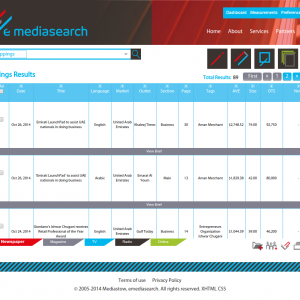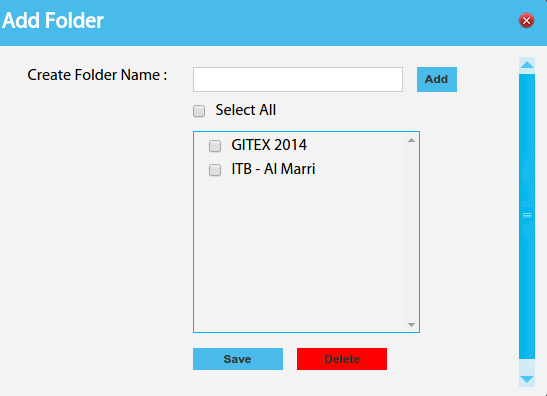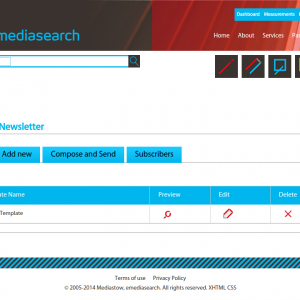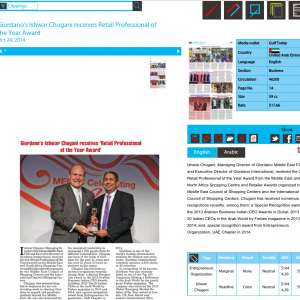 It has been a long time coming. When I first started Mediastow, it was because I genuinely felt I could do something that was superior to what was being offered in the market. And I did, from a purely technical and operational perspective.
It has been a long time coming. When I first started Mediastow, it was because I genuinely felt I could do something that was superior to what was being offered in the market. And I did, from a purely technical and operational perspective.
We had a great media monitoring platform. I sat through all the reports clients wanted and I started developing a system that allowed them to generate reports that made those $1k reports obsolete. It was too early. People didn’t want to login and click. They wanted to receive an email with a PowerPoint presentation. The main users for our tools were our own research team. It allowed us to do the job efficiently. The system paid off, albeit in unexpected ways.
Then 2009 happened. We stopped development. We stopped thinking of how to make better products. We focused on survival through Operational Excellence. We applied strict measurement practices that accounted for every second spent by our data importers, readers and supervisors. We literally have counters in our media system’s interface. We became measurably efficient.
But after surviving the financial crisis, I’ve found it hard to go back to the R&D mode. Sales were picking up and we were selling what felt like an aging product. I will never forget a conversation I’ve had with one of our clients. He said, “Your site is aging and it shows.” That statement created a gaping hole in my mind. I knew he was right. But I still wasn’t ready.
Now that I think about it, it was a combination of two things. One, I was disappointed that our clients did not have the same appreciation we had for the Measurement tools we created. We were sure that it would make their lives easier. It was great that our own team used it, but our clients still were uninterested in any do-it-yourself reporting tools. Two, I have watched inferior products still sell, which taught me that the product may not be the most important thing to gain business.
Media Monitoring Landscape Changes
During the past 9 years of being into the media monitoring business, the media landscape has undergone a dramatic transformation. Social media changed everything. Digital became a real force. Gone are the days where AMEInfo was the online coverage. Blogs became a thing. Facebook, Twitter, Instagram.. the world has changed!
This new digital world introduced people to measurement dashboards and reporting tools. Facebook wasn’t about to create a PowerPoint presentation with a bunch of graphs for you every month. You log in and you do your own digging. People started getting used to using online tools. It quickly became a staple of media monitoring.
There was a paradigm shift. Clients were no longer using our service to browse for content. They were using it to generate reports. And I loved it. Our tools finally started making sense. We went from, “I don’t want to login to the site” to “how do I export this to Excel?”
Off I went to the drawing board. It was time to re-imagine our product. Our site was aging and it showed. A facelift will not do. We had to re-think the whole thing. And we did.
There were two sources of inspiration for our new platform. I keep a list of all client requests (from the reasonable to the seemingly impossible ones). After a while, trends and patterns emerge. I also look to our growing research team and see where they spend the most amount of time. They are, of course, a lot easier to analyze than a client’s internal operation.
I’m a technical guy by education. I look for bottlenecks. I look for things that a machine can do. I don’t like it when a human is performing a task that can be automated. It bothers me in ways I cannot describe.
I noticed that people spent a lot of time on Excel after exporting reports. They spent this time sorting and filtering through things. Why not allow them to do all this within the system, with a full featured search? And there, I knew what needed to be done. I knew the main theme of the new platform. A full-fledged reporting tool. Browsing content is secondary. Reporting took the driving seat. It was time to live up to the name, emediasearch.

Search is Everything
In the original system, we kept the search simple. This was mostly because people did very little on it and their uses were limited to simple search queries. We did have an advanced search option that our more advanced clients used, but most of our clients were content with the simple search we offered.
We decided to make the search central to everything. That meant the search needed to be both simple and advanced. This is easier said than done. How do you keep something simple and have even more advanced features? I think we figured it out.

The search was going to always be in the same place. In every page you visit. It was going to expand as you needed it to.

Folders and Groups
One common request was to allow for clippings to be put into folders. The other guys can do this, why can’t you? Well, we’ve added the feature. It was a common enough request. But, it wasn’t enough. Why stop there? I wanted to create a better product, not a comparable one.

Say hello to Groups. Groups are a basket of tags, which makes it easier to group things in for search purposes. Everything on the new platform is affected by the search.
For example, if you had the following tags: Carrera, Cayman, Boxter, etc. You can create a a group called “Porsche Cars” an place Carrera, Cayman, and Boxter in it. This allows you to:
- Search for “Porsche Cars”, where your search would automatically include the tags in the group.
- Export a report of all the tags in the group
- Create a section/category in the email alert report under the group
- Generate measurement graphs using the group the same way you would for individual tags
Exporting Reports
As clients became more sophisticated, demands on what reports included changed. We ended up with two different exportable report types that had names which made no sense. The truth is, only one should have existed. But we came on to a market with legacy expectations and we tried to manage them. It was time to do away with the things that didn’t make sense.
All exportable reports are done based on the search criteria and was a simple process of clicking on a single “Export” icon. That’s it. No dedicated page. It was simpler.
I like simple.
Newsletter Management (Media Alert Reports)
We have re-visited the way we manage our newsletter alerts several times over the past 9 years. We have started with a simple 3 times a day alert at pre-set times. We then introduced a second type of alerts called Express, that is earlier and twice a day only.
The developments were, as often is the case, a direct result of client requests. We have decided to do away with how we did things.

Frequency and Times
We no longer want to dictate the frequency of the alerts you receive. You want it once a day? Twice? Three? Five? You decide. You also decide the exact timing you would like to receive the alerts in. We will send you what we have. You are in control.
Order of categories
In our older system, we allowed you to select a single “tag” to appear at the top of the categorized list of clippings. Many clients have expressed wanting to further order what appears next. This wasn’t possible the way the older system was designed. We now can.
We didn’t want you to simply be able to order tags. We wanted you to truly have control. So, you can now decide what tags to receive alerts on as well. You can now use Folders and Groups as part of the categories in your order.
Manage subscribers
We’ve noticed that a lot of clients need to frequently update the list of recipients of newsletter alerts. People move, new people come in, different people get assigned to projects, etc. We thought it was time to give you full control over the list of people you wish to have receive the alerts.
You can add/remove email addresses manually or you can import them from a CSV file.
Design Your Alert Template
One size fits all design is no more. We provide you with our standard template, but you are free to modify and completely redesign the way the alert appears and the type of info included. You can decide that you wish to see a thumbnail or not. You can decide if you want to see the page number of language or a clipping or whatever other metadata that is associated with any given clipping.
Once again, we put you in full control.
There’s More
There are several other features like exporting your content listing to a printable PDF, multiple select clipping book or Excel report, or reject clippings. Oh yes, you can now reject a clipping and it would be immediately removed from your account.
Not to mention that you can now add graphs with saved search criteria into your dashboard, so you see them as soon as you login!
And we made the clipping view page look a little better 🙂

Moving Forward
We have spent a lot of time working on the new emediasearch platform, but the work is far from done. There is a lot more emphasis that will be put on reporting tools as we move forward. We will continue to focus on Product Leadership by consistently creating better products.
by: Mo Elzubeir, Managing Director

